One Week in Spain: A Perfect Itinerary for First Timers
Spain’s history really gets shortchanged in American high school history textbooks, where it basically gets boiled down to “they were rich and sent Columbus (and the other Conquistadors) to the Americas” when the reality is much more diabolical and full of intrigue.
I remember learning about that history on our first trip to Spain, which was a monthlong foray on the three month European adventure that really kickstarted this site a few years ago, and being flabbergasted at all the different players who have been involved over the centuries.
A few things that intrigued me:
- The fact that there was an 800 year war for control of the Iberian Peninsula – the Reconquista – with a series of Islamic Caliphates from North Africa and the Middle East (hence some of the aspects of the Spanish language today, like any word that starts with the letters “al”).
- The fact that the Spanish crown was first held by people who were essentially Austrians (the Habsburgs) then French (the Bourbons).
- The fact that the Philippines were named after a Spanish king named Phillip.
Wild stuff with wide-ranging historical consequences!
Anyway, the point here is that Spain is fascinating, we love Spain, and you should go.
If you’re planning a trip to Spain with a week to spend and you’re not sure where to start, this guide is for you!
We’re going to give you our version of the best way to spend one week in Spain for the first time, all based on our own experiences on our first foray into Spain (a full month a few years back).
Since then, we’ve deepened both our knowledge and our love for Spain over subsequent trips that cemented it as our second favorite country in Europe (after Italy, mi amore).
In this guide to planning an amazing 7 day Spain itinerary, here’s what we’re going to cover:
- Exactly how to plan out your time in Spain, including what stops to make, what route to take, and all the important logistics you need to know
- A guide to what to do, where to stay, and how to get there for each stop on the itinerary
- Options for shorter and longer trips if you have more or less time in Spain
Throughout the guide, we’ll share our favorite finds and experiences in Spain based on our multiple trips (including a full month in Spain a couple of years ago, and a more recent 10 day trip) to help you plan your unforgettable trip.
Sound good to you? Let’s get into it.
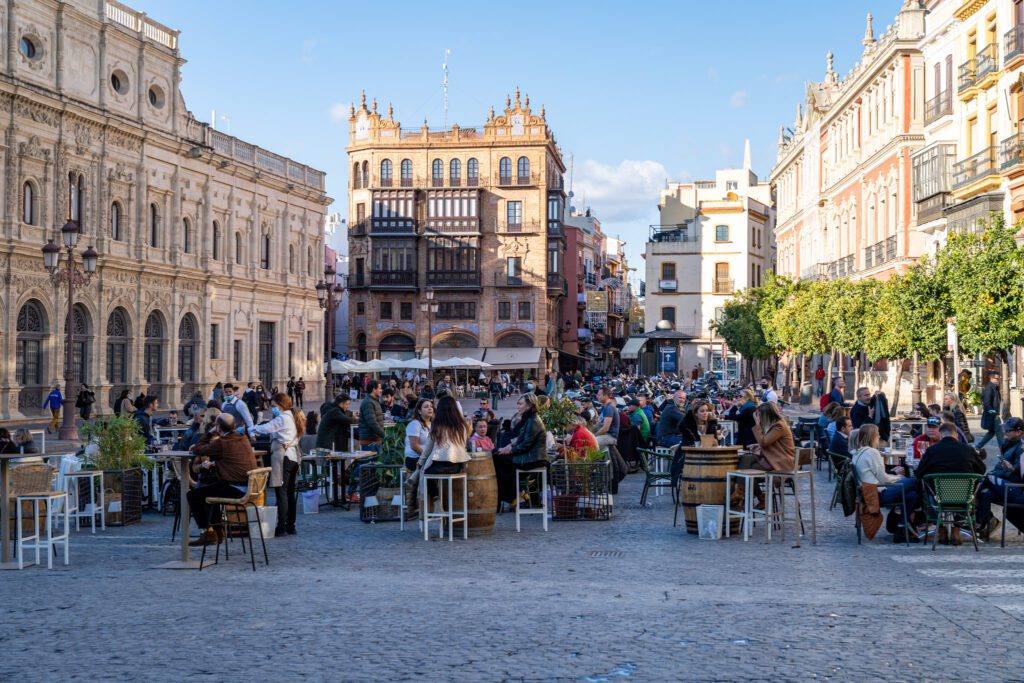
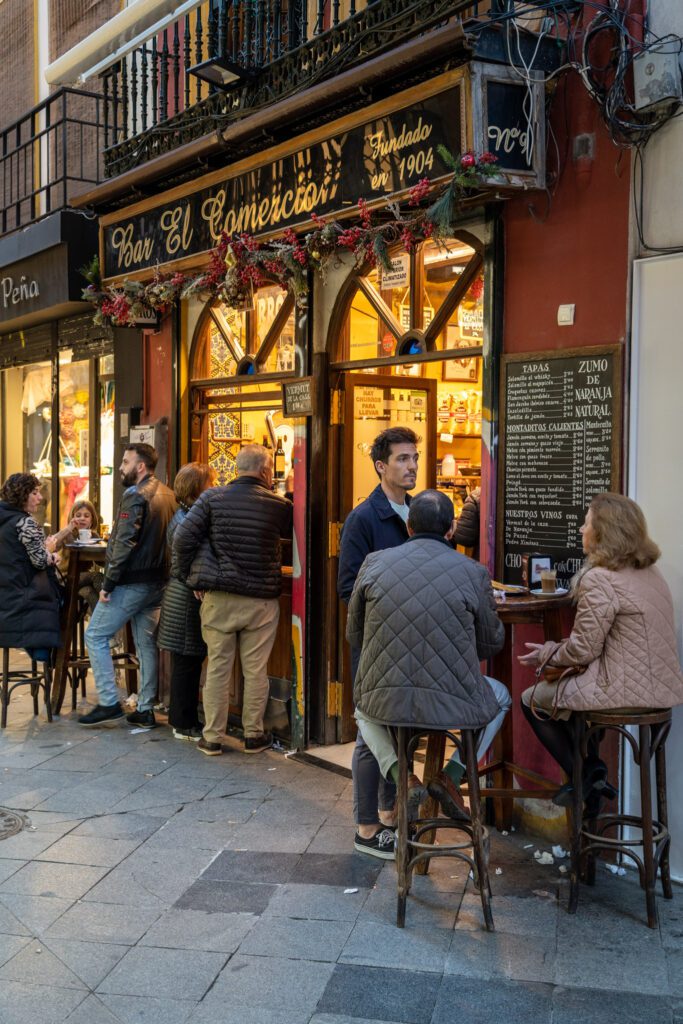
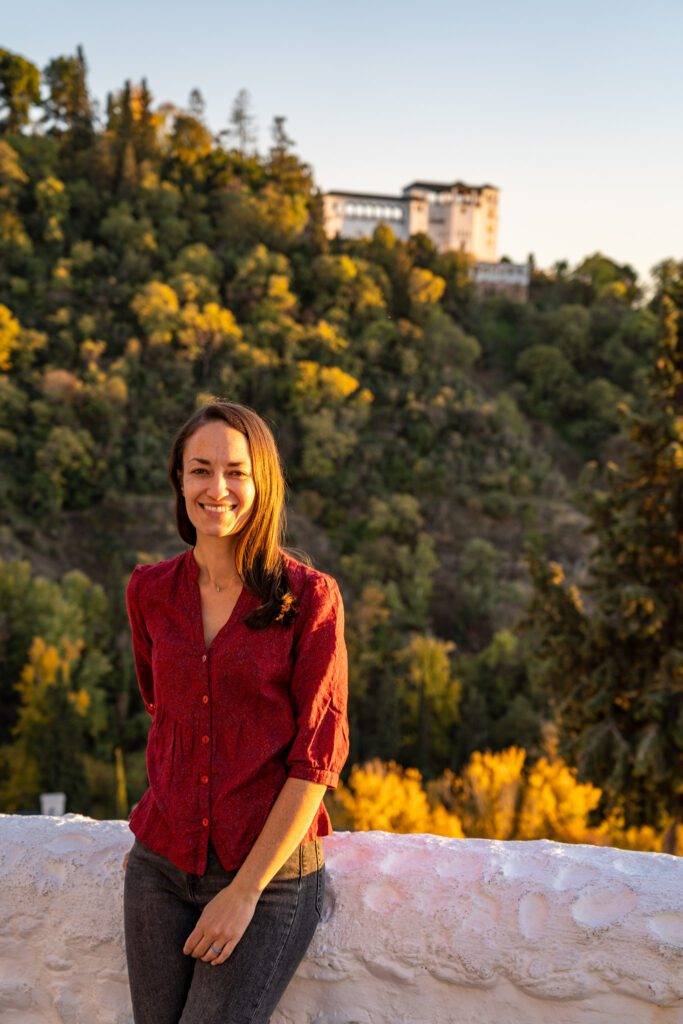
Disclaimer: Some of the links in this post, like hotel links, are affiliate links, meaning at no additional cost to you, we make a little bit of money if you click through and book. That being said, we would never recommend something to you that we don’t stand behind 100%.
What Can You See With One Week?
The first thing we should do here is set expectations for what you’re going to find in this itinerary, because it is very much NOT a “one city per day to cram it all in” situation.
Generally speaking, we highly recommend spending no less than two or three days in a city at the very least.
Mostly because packing your bag and moving every day or two is exhausting, and is not a particularly pleasant way to travel (especially with check in and check out times, which can mean you’re just losing precious time on your trip).
When you get into the main itinerary below, you’ll notice that we have you spending just two days in two Spanish cities, which is fast for us, but is a compromise that we think you’re going to have to make between slowing down and seeing the highlights with just a week to spend.
If you have an extra day or two, the first thing we’d do is extend those (particularly Madrid) by a day to give yourself more time to see the city.
But Wait, What About Barcelona?
You might expect to see Barcelona on this itinerary, and SPOILER you’re actually not going to find it here.
There are a few reasons for this, most of them are practical in nature.
Barcelona is a big city with lots to see, much more so than either Madrid or Sevilla (in our opinions), and trying to cram it all into two or three days is not going to be particularly pleasant. I recently spent a week in JUST Barcelona (spring of 2024) and I still didn’t make it to everything I wanted to do.
Barcelona is also on the complete opposite end of the country from Sevilla, which means it’s not practical to include them both in the same, relatively short itinerary.
And last, but certainly not least, the less practical reason; of the three major cities we’ve mentioned here – Barcelona, Madrid, Sevilla – Barcelona is pretty clearly our least favorite and, we’d argue, the least interesting of the three.
Practically speaking, here’s what it comes down to.
Essentially, we think Madrid is a must-do (especially given its central location within Spain), and you can’t do all three – Barcelona, Sevilla, and Madrid – in just a week.
That means we recommend choosing between Barcelona and Sevilla (and the rest of Andalucía), and we have a STRONG point of view on which you should choose that informs the main itinerary below.
We LOVE Sevilla, Córdoba, and Granada, and that’s what we think you should opt for. Our hope is that by reading this guide, you’ll come to see why we think that.
However, we also recognize that Barcelona may be on your bucket list for a trip to Spain, so we’re also going to include information in the “with more time” section that covers how you can swap Barcelona in for Sevilla and Granada.
Where to Start and End Your Itinerary
If you follow the main itinerary below, the best way to organize your trip is to fly into Madrid and out of Sevilla (or vice versa).
A round trip flight might be slightly cheaper (in some cases, it might not be), but it will eat up a full day of your trip traveling back to a place you’ve already explored.
And given the fact that we’re talking about a seven day trip, that’s not an insignificant amount of time.
Between cities, it’s going to be most convenient to take high speed trains, which run between the cities on this itinerary. We’re big on train travel in Spain, and it’s our favorite way to move around.
In Madrid, you’ll want to fly into Adolfo Suárez Madrid-Barajas Airport (MAD), Madrid’s major international airport located around 13km outside the city center.
It’s Spain’s largest and busiest airport, serving numerous international carriers.
From the airport, you can reach central Madrid by train, metro, bus, or taxi (which you choose depends mostly on where you’re staying) and the journey takes as little as 30 minutes.
In Sevilla, you’ll want to fly out of Seville-San Pablo Airport (SVQ), which is Seville’s main international airport.
It is about 10km northeast of the city, and a special airport bus runs between the airport and the city center and takes around 40 minutes. A quicker but much more expensive option is to jump in a cab, which takes around 20 minutes.
Direct flights from Seville only run to Europe and Northern Africa, so you’ll need to connect if you’re flying back to the US or Canada.
How to Plan a Perfect 7 Day Spain Itinerary
And now, let’s get into the itinerary.
Here’s what the itinerary you’re going to find below looks like written out.
- Day 1: Madrid
- Day 2: Madrid
- Day 3: Train to Granada
- Day 4: Granada
- Day 5: Train to Sevilla
- Day 6: Sevilla
- Day 7: Day Trip to Córdoba
Obviously, you’ll have to massage this itinerary a little bit to make it work with your specific flights.
We’re assuming you have seven full days in Spain, not including the half days that would be dedicated to your arriving and departing flights.
A note here on flying versus taking the train: you could fly between cities on this itinerary if you really wanted to, but there are a couple of reasons why taking the train is a better option, we think.
First, assuming you’re taking a high speed train, by the time you add up all the extra time you have to spend at the airport (and getting there – more on that in a second) – the train journey is going to take roughly the same amount of time as the flight.
Second, the train stations for these cities are generally in the city center, which means it’s a quick and easy journey from train station to hotel.
On the other hand, the airports are generally 30-45 minutes outside the city center, which eats up precious time on your trip (and relates to the first point about trains being more efficient).
Third, trains are SO MUCH more pleasant than airplanes. You get to see the landscapes as you’re traveling, you’re not locked in a metal tube in the sky, and you generally get more leg room and baggage storage on a train.
There are two options we’ve used and would recommend for booking trains in Spain.
The first is going directly through Renfe, the agency that operates trains in Spain. This is what we generally do, but there are definitely some quirks.
You have to know the station’s name in Spanish (not a big deal at all), and more importantly, it sometimes decides to randomly decline our credit cards, which is how we found out about the second option when we were trying to buy train tickets but constantly getting kicked out of the system.
The second option is Omio. Omio is a third party platform (with a functional app) where you’ll get an excellent user interface that is in English and makes it very easy to navigate the process.
The downside of Omio is twofold: you’re going to pay a small service fee (which makes the price of the tickets marginally more expensive), and you’re going to sacrifice flexibility (because going through a third party generally means you can’t cancel and get a refund, though you can select a ticket that allows changes).
We’ve used Omio in Spain and Portugal, and we’ve never had an issue.
Days 1-2: Madrid
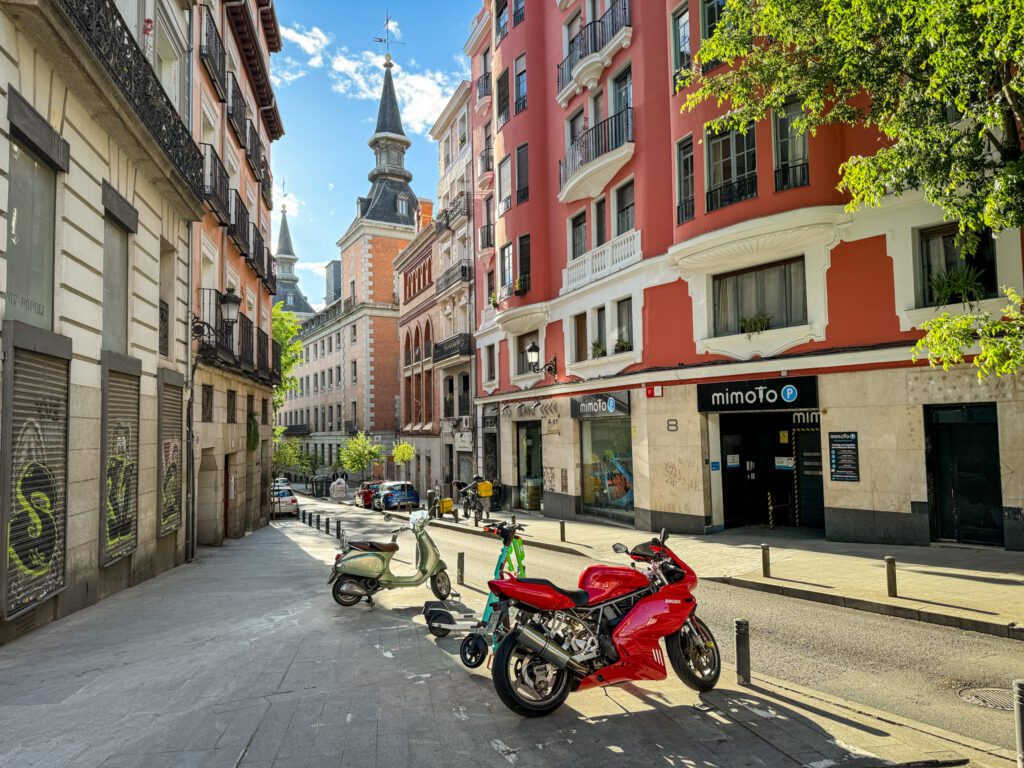
Madrid was the unsung hero of our first real foray into Spain a few years ago.
We spent a week in Madrid, and despite people being pretty “meh” on Madrid in comparison to Barcelona and Sevilla, we found it to be a very charming city with equally fascinating historical and cultural elements, great food, and – crucially – fewer tourists.
After my (Matt here!) latest trip to Madrid in the spring, I fell in love with the city all over again, and I think it is pretty clearly my favorite of Spain’s major cities.
Most people skip Madrid (or just spend a day there between Sevilla and Barcelona), but I’d highly recommend devoting two days to Madrid.
Today, Madrid is Spain’s capital and its biggest city, but if you rewind five hundred years or so to the time period when Spain was THE global powerhouse in Europe, Madrid was kind of just a blip on the map.
During the Reconquista – the 700 year war between the Christian kingdom and the Islamic Caliphates for control of the Iberian Peninsula (which is a fascinating aspect of Spanish history), Madrid was the site of a fort built by the Caliphate.
It was a small settlement, basically taking up the space where the royal palace and cathedral are today.
Then, after the area was reconquered, Philip II moved the capital from nearby Toledo to Madrid in the 16th Century, which is where the history of the city as we know it really begins.
It’s a fascinating story – definitely one that I never heard in school growing up – and it’s part of why we think Madrid is such an underrated destination.
That, the tapas, and the somewhat unbridled energy – which you really see from 8pm to 2am if you walk through an area like Malasaña, which is full of people out in plazas drinking and being merry – make Madrid our favorite stop in Spain, and a top three city in Europe (which is saying something, because Rome, London, and Lisbon are all also in Europe).
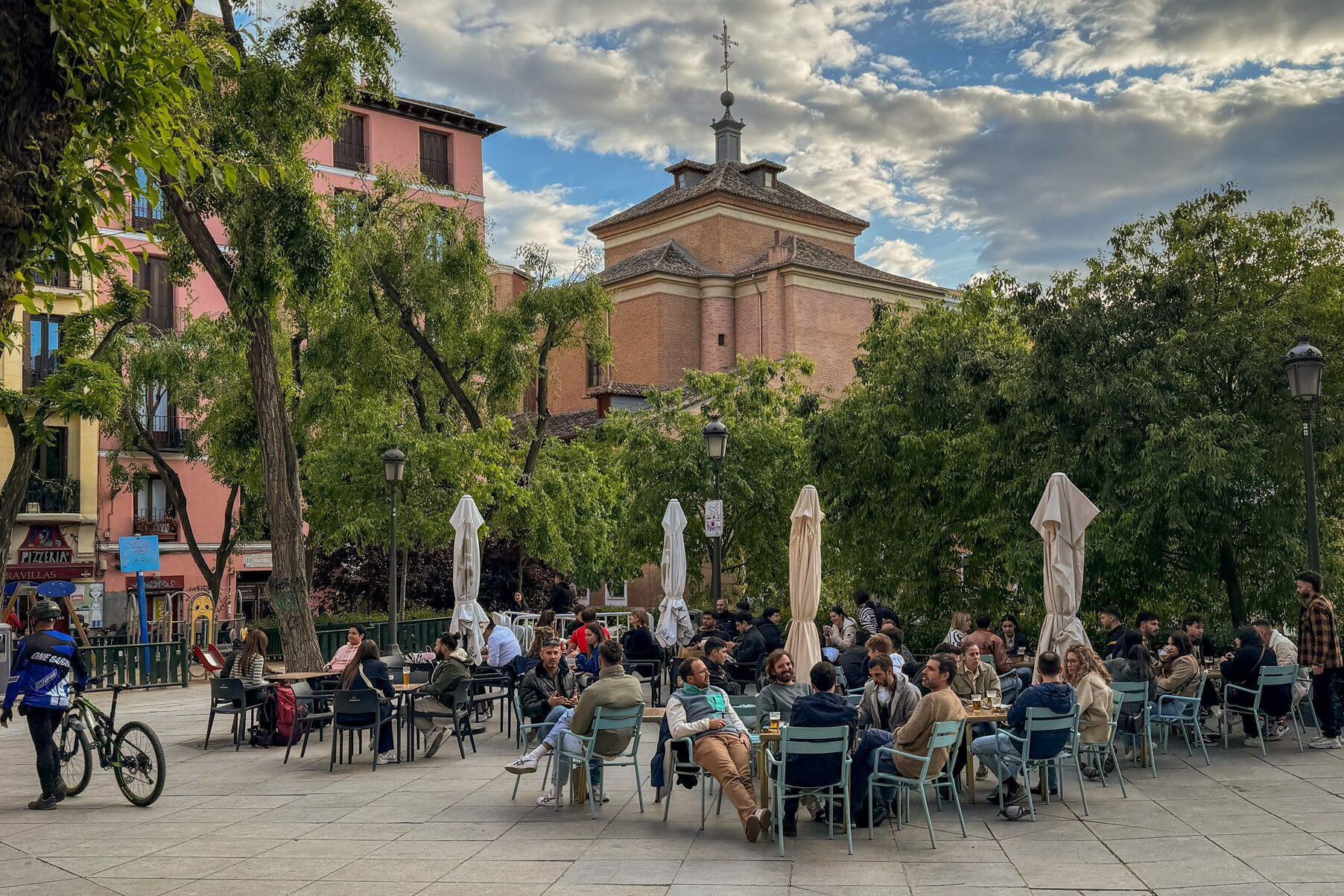
What to Do in Madrid
Here are some things that we think you definitely shouldn’t miss while you’re in Madrid.
For more, we’d point you to our 2 day Madrid itinerary and our guide to the best things to do in Madrid (for first timers), which have all of our favorite things to do, see, eat, and drink in the Spanish capital.
Lexi’s Walking Tour
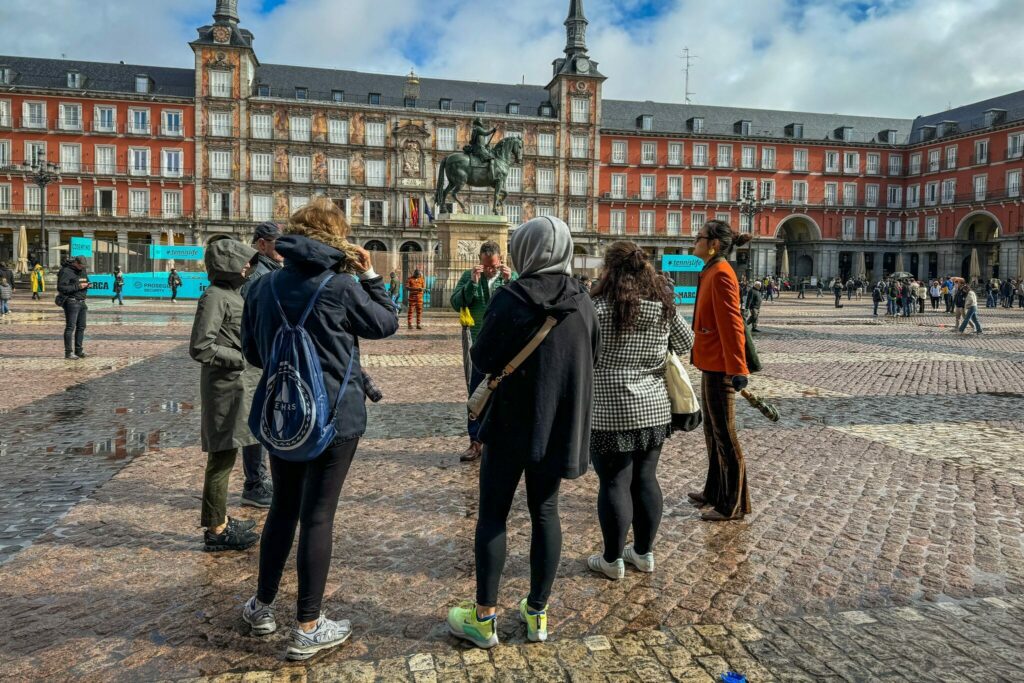
On just about every trip we take, there is a single experience that we look back on as THE experience of the trip. Speaking about the Spain leg of my latest trip, this was that experience.
By the time I got around to Lexi’s walking tour, it was my last day in Madrid, and I had been on three other walking tours across my two trips.
This tour, which is led by Lexi who is a historian with a focus on Spanish history, weaves a story about what makes Madrid special.
Along the way, you’ll cover the history that we find fascinating, get a list of places to eat and drink that you’d definitely never discover on your own, and learn A LOT about Spain and Madrid.
Do it on your first morning in Madrid, you won’t regret it. Click here to check prices, reviews, and availability.
The Museo del Prado
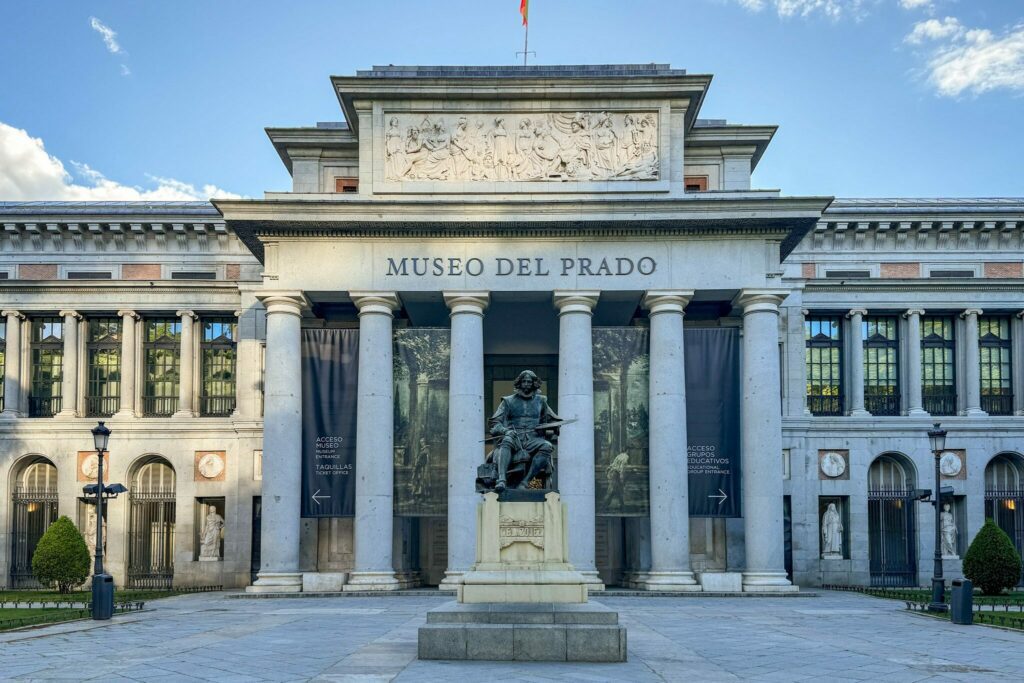
The Prado Museum is the crown jewel of Madrid’s museum scene, and it might be our favorite museum in Europe.
It’s more focused than somewhere like the Louvre, which is almost just too much to really take in, but has a diverse collection from Spanish, Italian, and Flemish (which is my favorite part!) artists that makes for a fun journey through the museum.
I have done the Prado twice, and taken a tour both times.
If you’re looking for a comprehensive three hour journey through the museum, go with Jaime’s tour (he’s an art historian born and raised in Madrid), who is the single person who is most responsible for helping me fall in love with Madrid.
Three hours isn’t enough time to see it all, but it gives you plenty of time to see the highlights.
If you’re looking for a more unique experience (the Prado is very, very busy), I’ve also done the VIP Early Access Tour with Walks, one of my favorite tour companies in Europe.
You literally stand at the front door of the Prado as they unlock it for the day, and we were the only people in the museum aside from the security team.
It’s shorter – only 90 minutes – so it’s fast-paced, but it ends inside the museum, and the guide can help you figure out what else you should see.
Tapas on Calle Cava Baja
When in Rome, do as the Romans do. And, in Madrid’s case, this means tapas! There is a very famous street in Madrid called “Calle Cava Baja” in Barrio La Latina that is lined with an endless number of tapas bars to choose from.
A few that have been recommended to me by various people are Taberna Tempranillo, Taberna La Concha, and Casa Lucas.
Other nearby options for tapas are Casa Ciriaco (towards the Royal Palace, on Calle Mayor) and La Lina (gluten free options for Celiacs – I’ve eaten here!).

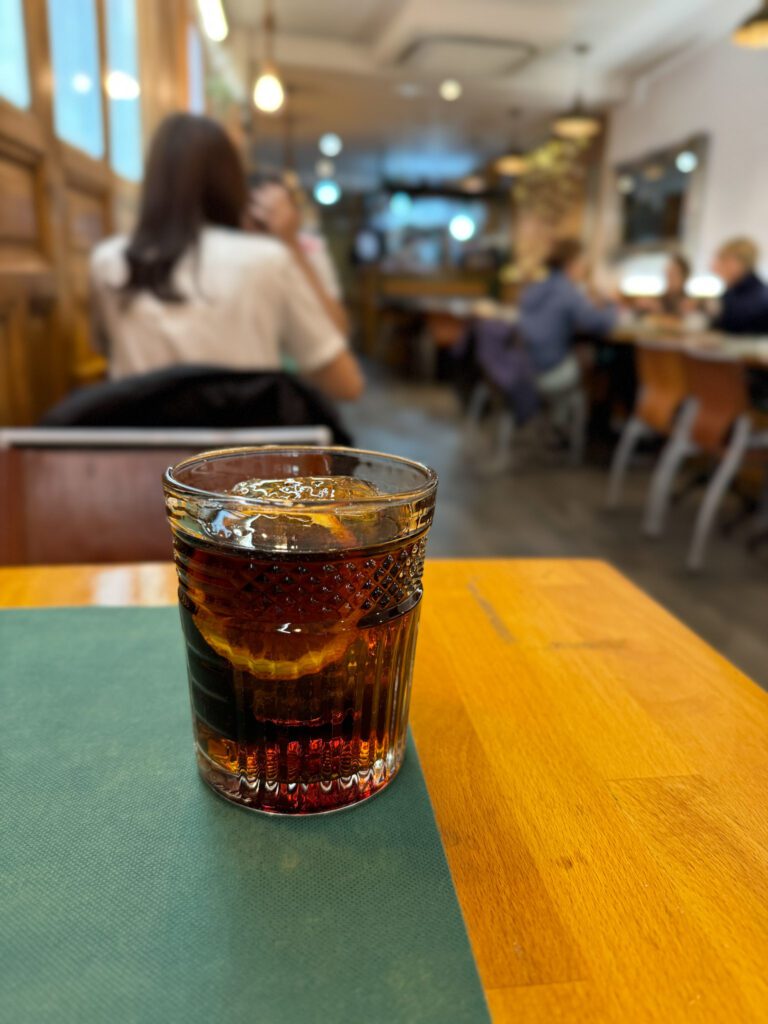
Where to Stay in Madrid
Madrid is a relatively compact city, and staying within the main city center is going to mean that you’ll either be within walking distance of most of the places you’re going, or within a short metro ride of them (and Madrid’s metro system is excellent).
When we say “Madrid’s City Center,” we’re talking about the area between the Royal Palace on the western end and Parque El Retiro on the eastern end. The northern boundary is Calle de José Abascal, and the southern boundaries are Puerta de Toledo and Puerta de Atocha (the train station).
Running east to west right down the middle of it all is Gran Vía, a wide multi-lane boulevard lined with multi-floor malls, huge hotels, and billboards that evoke Times Square in New York City.
It forms a nice boundary between the more traditional neighborhoods on the southern side of the city center like La Latina or Barrio de las Letras, and the more trendy, upscale neighborhoods on the northern side of the city center like Malasaña, Chueca, and Salamanca.
For all of the details behind this summary below, we’d point you to our more detailed guide to the best places to stay in Madrid, which has a complete neighborhood guide for all of the neighborhoods mentioned above.
Our overall recommendation for first timers in Madrid is Malasaña, which is our favorite part of the city.
It’s in a central location – I walked everywhere when I stayed here – and it has tons of great places to eat, drink, and shop.
Plus, it’s full of narrow streets and bustling plazas, which are peak Madrid to us.
If you want a hotel, look at the beautiful 7 Islas Hotel. If you want an apartment, I stayed at Sonder Malasaña and loved it (and it was quiet!).
If you’re looking for a slightly more affordable and equally convenient area, look at Barrio de las Letras.
It’s on the southeastern side of the city, close to both Parque El Retiro and the train station (Atocha), and it’s historically the part of the city where literary figures like Hemingway and Cervantes spent their lives.
It toes the line between being central but still retaining a lot of the character that makes Madrid special, with plenty of places to eat, drink, and be merry within its borders.
If you want a hotel, stay at Room Mate Alba, a nice boutique hotel right in the middle of all the action.
If you’d prefer an apartment, look at limehome Madrid La Bolsa (we’ve stayed at limehome properties before, and this location gets really good reviews).
Days 3-4: Granada
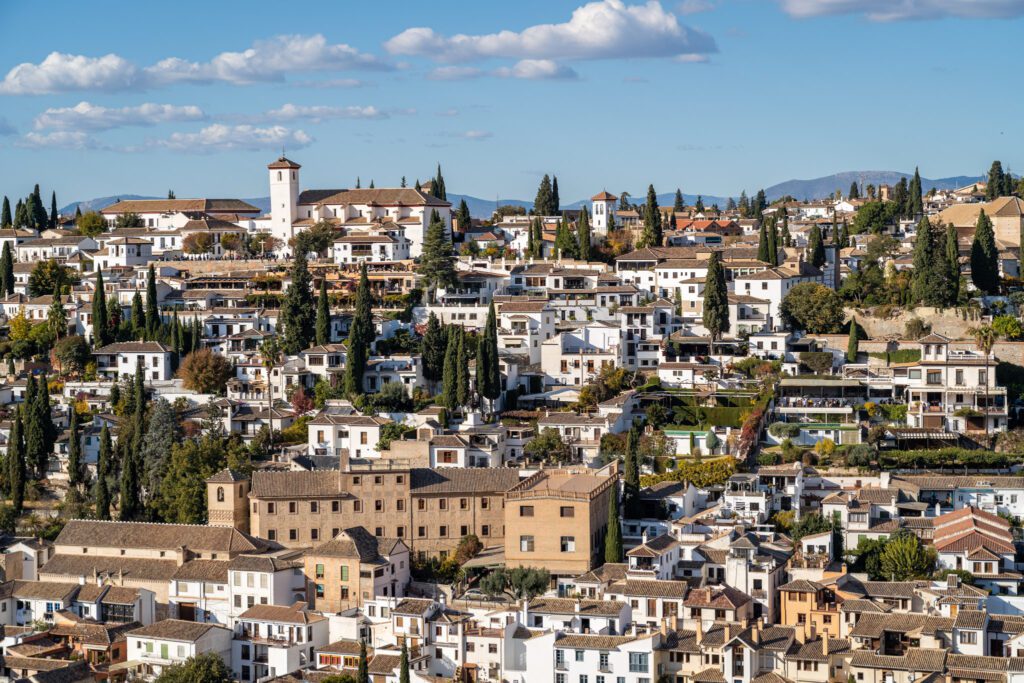
Granada is a delight. It’s a beautiful city from a geographic perspective – it’s essentially a valley set between two hills, with the Alhambra looming over the city on one of them – but it’s also a beautiful city from an architectural perspective.
One of our favorite aspects of Spanish history and culture is the fact that the presence of the Islamic Caliphate on the Iberian Peninsula for 800 years has left an indelible mark on the country as we know it today.
Even the name for the region – “Andalucía” – comes from the name for the region in Arabic, Al Andalus (as does just about every other Spanish word that starts with “al,” like “alcázar.”)
As you move from Madrid, which is heavily influenced by Austrian architecture in places (like Plaza Mayor, which looks very out of place to me) thanks to the influence of the Habsburgs on Spain’s history, you’ll start to notice a shift to a different influence in Granada and the rest of southern Spain.
Andalucía – which essentially takes up the southern coast of Spain – is the place where this mark is most noticeable and ever-present, even today.
Mostly because that’s where the Islamic Caliphate had its stronghold for centuries (Granada was the last city standing, and surrendered in 1492).
It’s particularly evident at the Alhambra, which is going to be the cornerstone of your time in Granada, but you also see it in other aspects of the city, like the narrow alleyways and lush walled gardens, and the tea houses that still exist today.
A lot of people do Granada in a single day, but we’d stretch out your time to make the journey worth it, and to really get a sense for what makes this one of our favorite places in Europe.
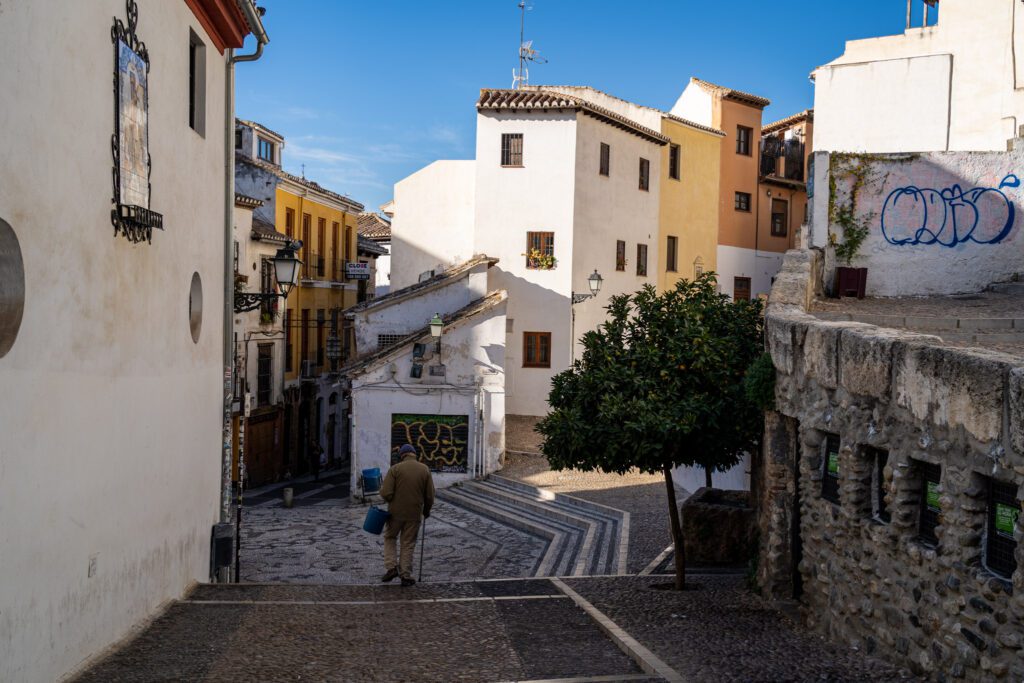
Getting to Granada
From Madrid, you can – and should – take the high speed train to Granada.
You’ll catch the train at Madrid’s Atocha Station, which is at the southeast corner of the city center near Barrio de las Letras, and you’ll want to catch the train to Granada’s station, which doesn’t have a specific name.
It’s a three and a half hour train ride between the two cities (if you take the high speed train), and you may have to make a connection in Córdoba.
At the time of writing, there are only two convenient direct trains per day – one at 7:30am and one at 2:30pm – along with a few alternative options that include a connection that brings the travel time up to four hours.
Click here to check prices and timetables for the journey Omio.
What to Do in Granada
Here are some things in Granada that you shouldn’t miss over the course of your two days in the city.
For more, we’d point you to our 2 day Granada itinerary, which has all of our favorite things to do, see, eat, and drink in Granada, including how to visit the Alhambra.
A Walking Tour to Get Oriented
Per usual, our favorite way to get oriented to a new city is by connecting with a local guide for a walking tour.
We did this great walking tour, which covers the Albaicín – the neighborhood that sprawls up the hill on the northern side of the valley (across the valley from the Alhambra), which is historically the Muslim quarter of Granada.
This neighborhood (along with the Alhambra) has been declared a UNESCO World Heritage Site, and walking through it, it’s easy to see why protecting it is important.
It’s all narrow alleys, winding cobbled streets, and older houses.
Taking a tour is a great way to discover places and points of view that you definitely would never find on your own (along with the important historical and cultural context you need to know about them), and you’ll have the added bonus of connecting with a local to figure out where to eat and drink in town, what else to do and see, and more.
The Alhambra
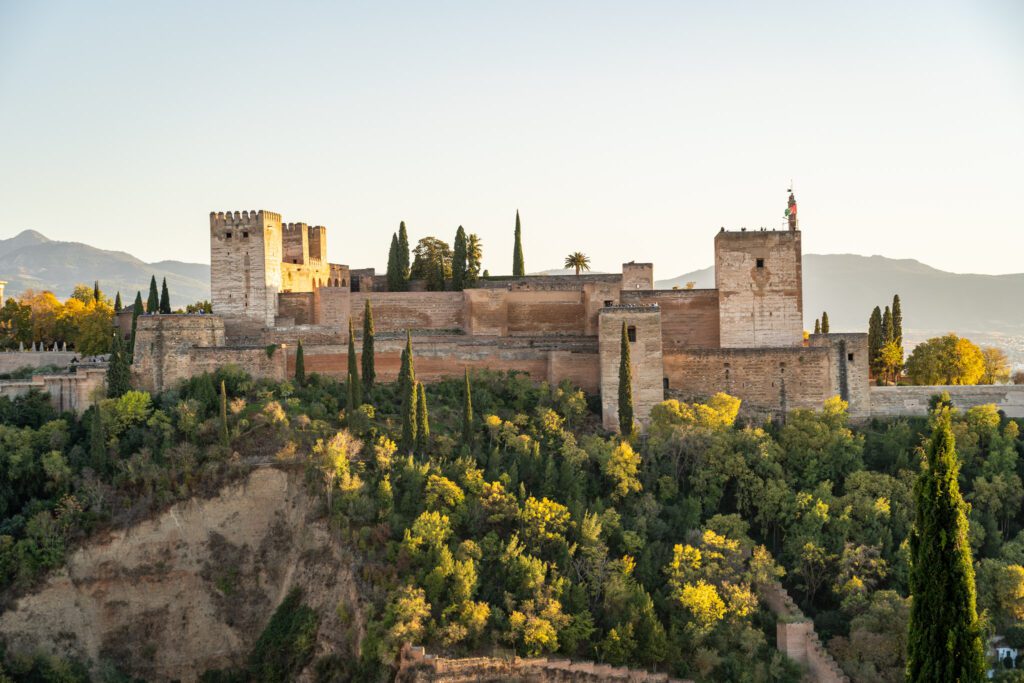
This is the most important example of architecture from the Muslim period in Andalusia (versus being built after that period when the style was trendy), and despite being abandoned for two centuries, is in relatively good condition.
It wavers between the top and second most visited site in Spain, alternating with the Sagrada Familia in Barcelona, depending on the year.
To be honest, I get the idea that the Christian monarchs saw the beautiful fort/palace on the hill and said “hm, yeah, let’s keep that” when they arrived in Granada, and you can see that they did their best to make it their own once you’re inside.
More often than not, the changes they made stick out like a sore thumb (like the crowns added to the tilework in one of the palaces), and are a detraction from the experience and take you out of the moment more than anything else.
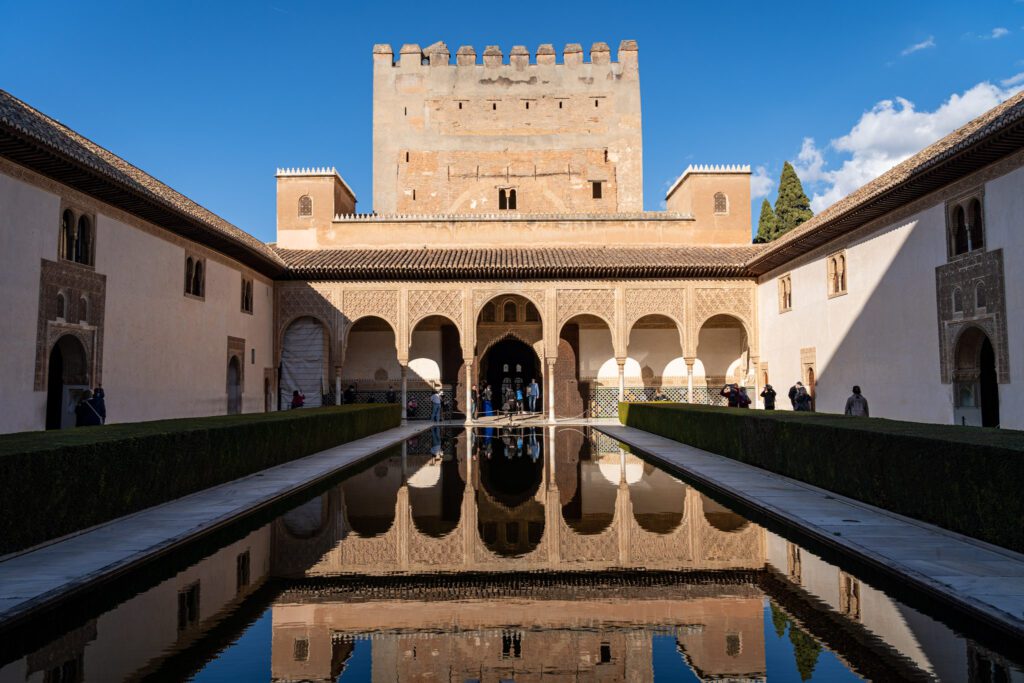
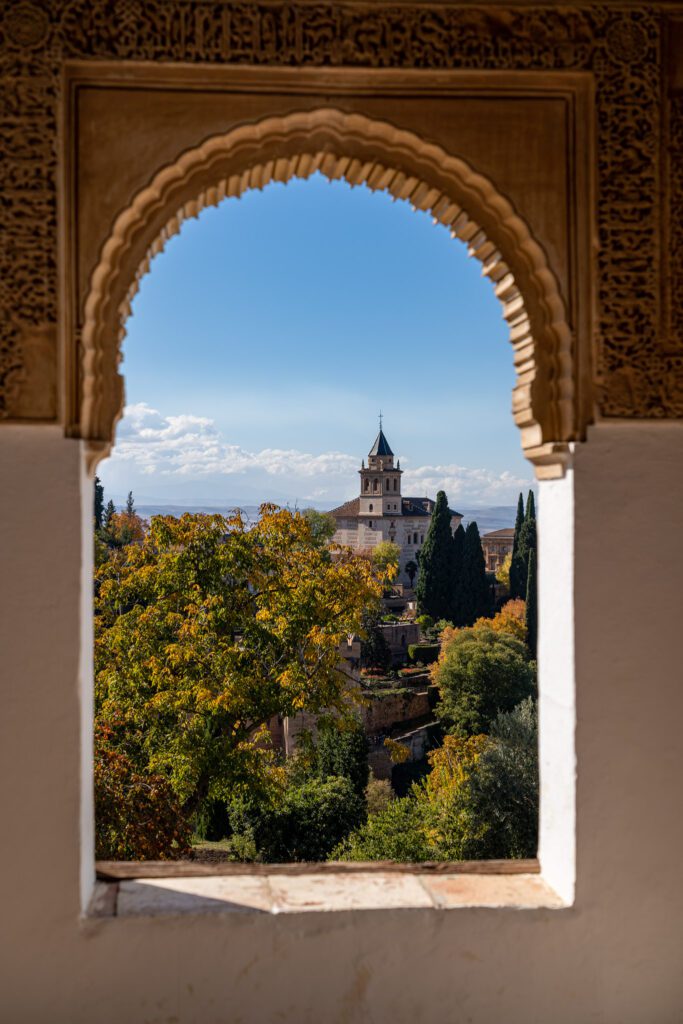
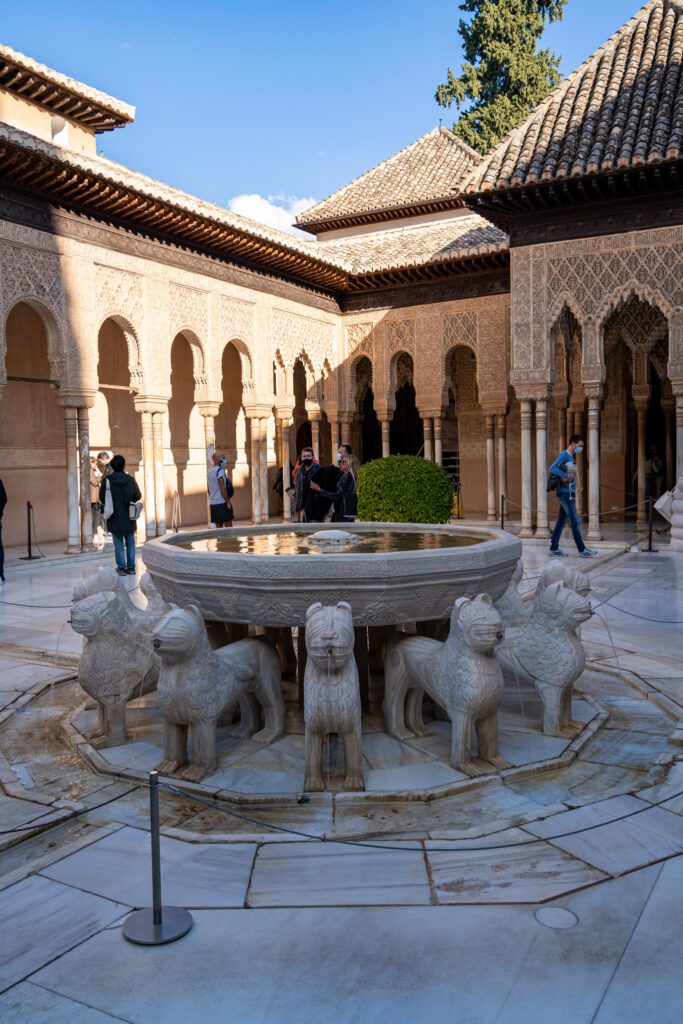
The Alhambra is going to take most of the day, and there’s really no “best time” to see it. Because of its popularity, tickets in high season are essentially sold out all day long.
If you’re visiting in the summer, the only recommendation we have is to avoid the heat of the day.
Try to visit before 12:00 pm or after 3:00 pm, if you can.
This is a site where a guided tour is going to be worth the expense, because the cultural and historical context is SO important in understanding exactly what you’re looking at.
We did this three hour tour, and would highly recommend it.
The Catedral de Granada
The main reason to come here is the fact that Ferdinand and Isabella – the king and queen who united Aragon and Castille to form Spain as we know it today – are buried here.
They accepted the surrender of Granada in 1492 (the same year they financed Christopher Columbus’ expedition that landed him in the Americas, mostly by accident), and crystallized the Spanish crown’s power over the Iberian Peninsula.
To see their burial places, you’ll want to get a ticket that includes the Royal Chapel (Capilla Real), but you need a separate ticket to visit the interior of the cathedral.
Book tickets here (although we showed up and bought them onsite, and it worked for us).
A Sunset Walk Through the Albaicín
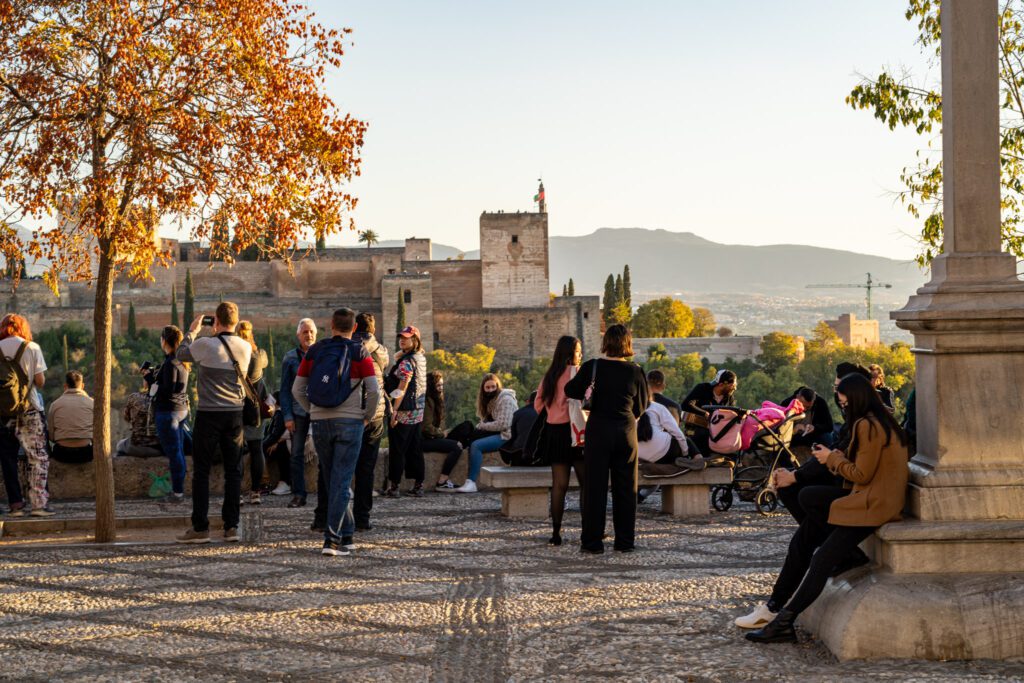
While you’ve already done a walking tour of Granada, it was likely during the morning hours.
We’d strongly recommend coming back for an afternoon of exploration, starting about an hour before sunset so that you can catch the golden rays of sunlight coming back through the valley, lighting up the Alhambra.
Here’s a rough route that we’d follow, starting at Plaza Nueva and winding through the Albaicín, ending at Palacio de los Cordova.
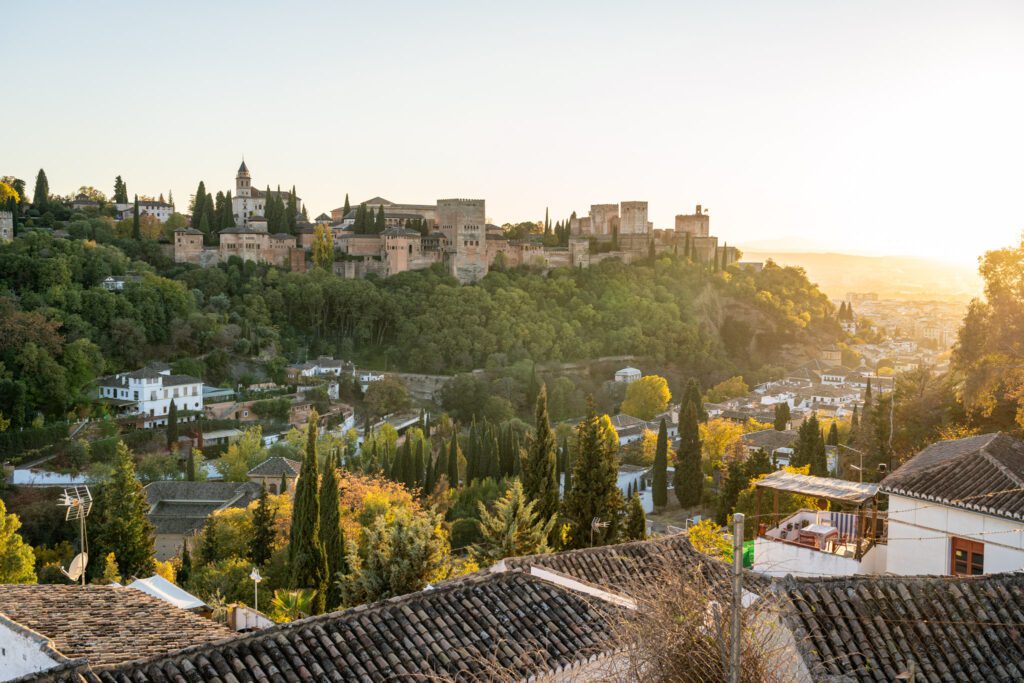
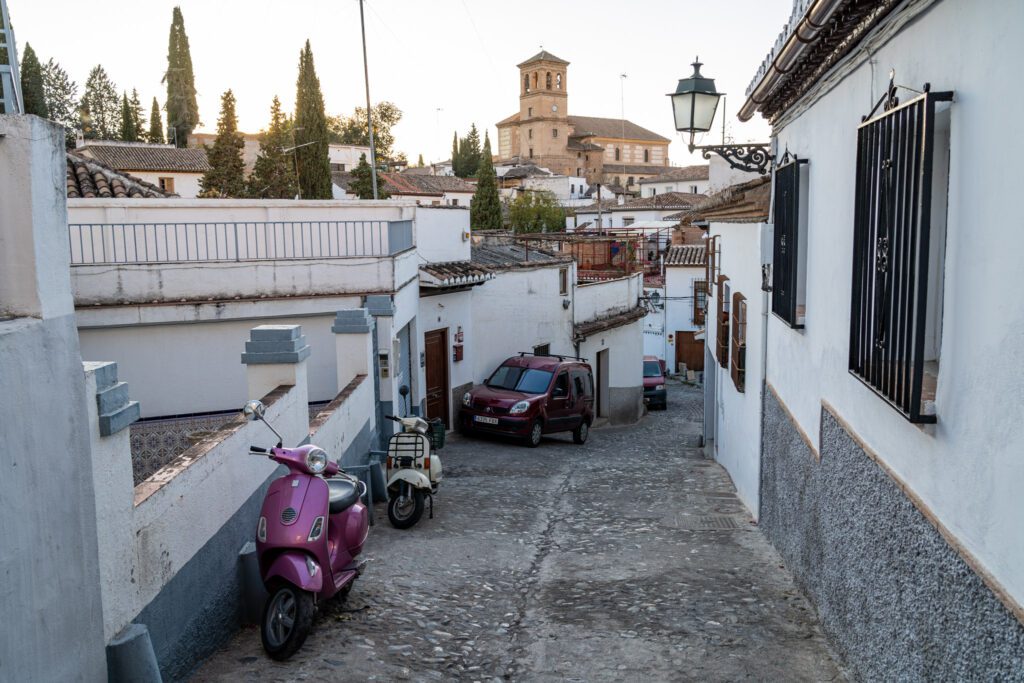
Where to Stay in Granada
Granada is a fairly compact city, and we’d recommend staying somewhere near the bottom of the valley to avoid unnecessary walking up and down stairs constantly.
As charming as the Albaicín can be, it does mean that you’ll be climbing up and down a lot (which might be fine for you, depending on your appetite for walking and sweating).
We stayed at this limehome location on Calle Santa Ana, which turned out to be almost the perfect location in Granada. It’s five minutes from the paths up to the Albaicín, a short walk from the Alhambra, and ten minutes down to the cathedral.
The apartment itself was also nice, and despite it being the end of fall and relatively cold, we spent a morning out on our patio enjoying some tea and coffee in the morning sun.
If you’re looking for an affordable stay, there’s a TOC Hostel in Granada, which is a hostel company we’ve stayed with in Barcelona – which is a mix between a boutique hotel and a hostel.
They have private rooms with ensuite bathrooms, dorm rooms, and nice facilities, and it’s around the corner from the cathedral.
Days 5-7: Sevilla (and Córdoba)
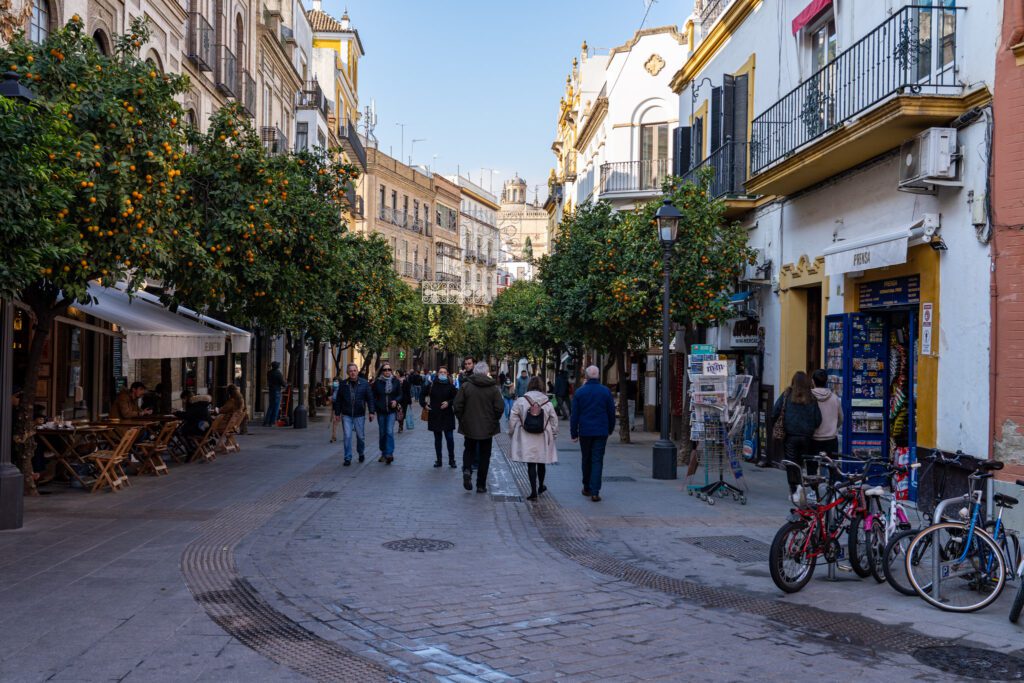
Remember the story we told about Granada and the influence of the Islamic culture and architecture?
When you get to Seville, the next stop on this itinerary, it could not be more in your face than at two of the city’s main sites: the Royal Alcázar, with its Mudéjar architecture and vibrant gardens, and the Cathedral, which was built on the site of the original mosque with its single tall tower, where imams would issue the call to prayer.
Although, it is kind of funny to us that the Mudéjar architecture you find at the Royal Alcázar of Sevilla was actually completed well after Seville was re-conquered, when the Mudéjar style became trendy in royal circles.
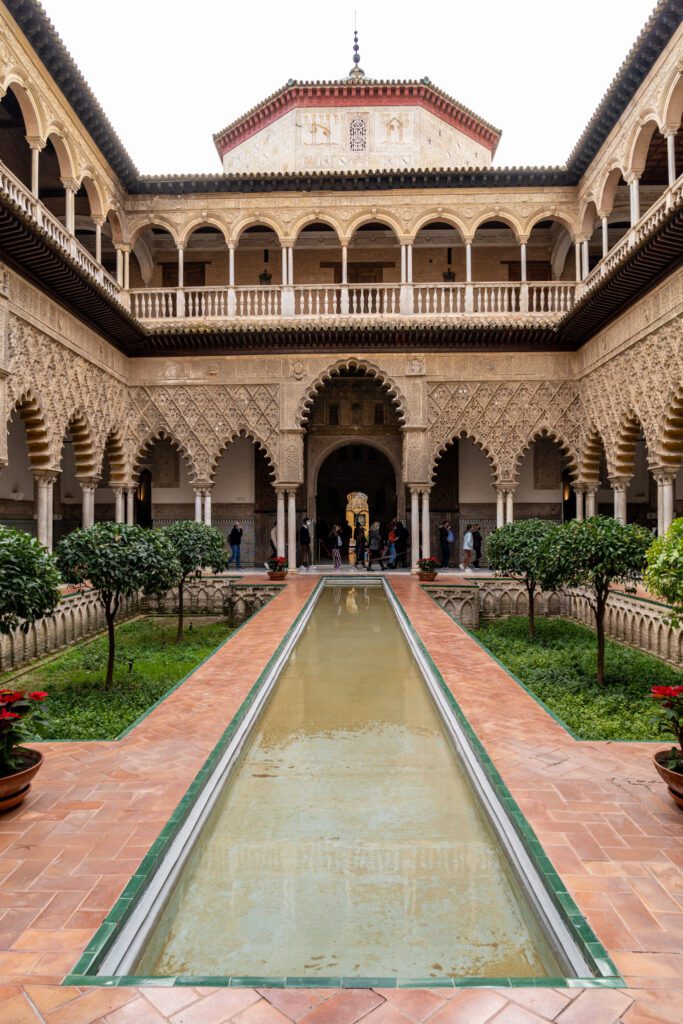
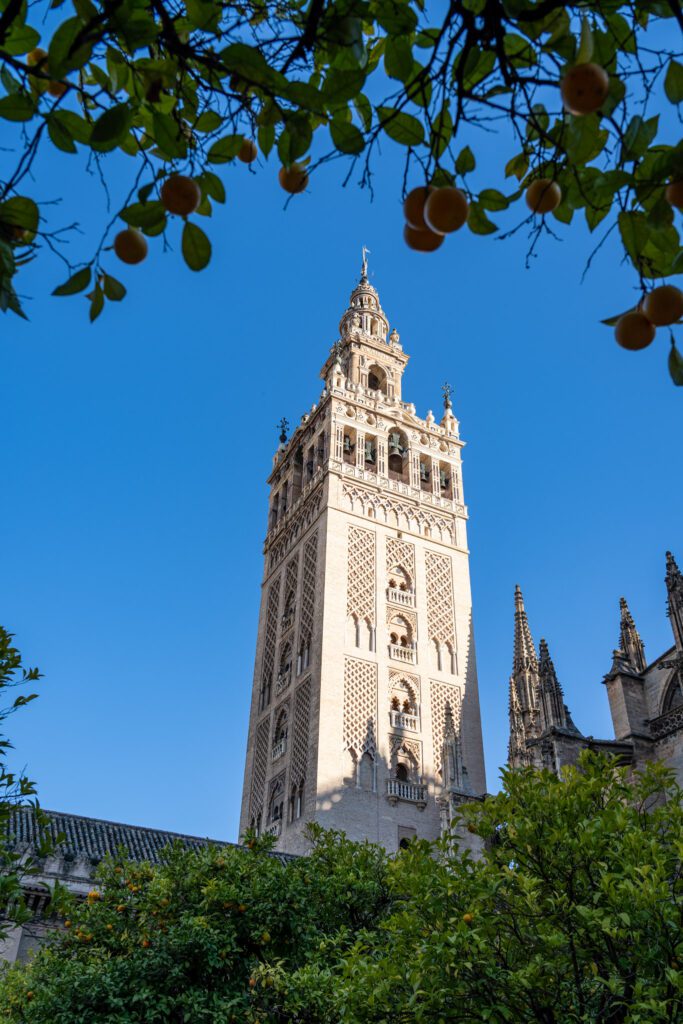
Sevilla is somewhere in the top 3-4 most visited cities in Spain, depending on where you look, and it’s pretty easy to understand why. It’s warm (sometimes too warm), it’s sunny, it has some great food and drinks – what’s not to like?
But what we think makes Sevilla really special is the history behind that vibrant culture, which is what draws us to Andalucía. And Sevilla is FULL of history that is basically on display around every corner.
You might also notice that we have you spending the most time in Sevilla out of the cities on this itinerary, and the reason is related to its position as a hub for a great day trip.
After much deliberation about which of the great day trips from either Madrid (Toledo from Madrid is great, too, and is the first thing we’d add if you have one extra day) or Sevilla to include, we landed on the trip to Córdoba from Sevilla as the one day trip we’d include on this itinerary.
And we feel great about that recommendation, because it’s a really fascinating city (we actually spent three full days there).
So, if you follow this itinerary, you’ll spend two days in Sevilla itself, and then a third heading over to Córdoba to close out your itinerary.
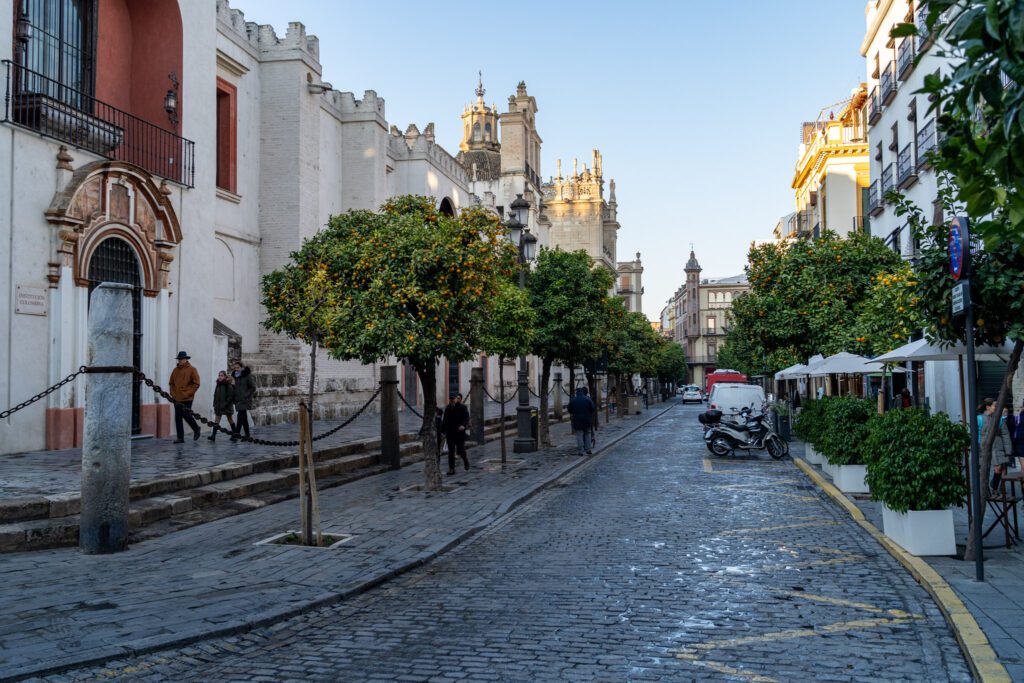
Getting to Sevilla
It’s going to take you a hair under three hours to go from Granada to Sevilla, and there are direct high speed trains available throughout the day (including a few afternoon options).
You’ll want to shoot for Sevilla’s Santa Justa Station, which is the city’s main train station and is right in the middle of the city (more or less).
Click here to check prices and timetables for the journey Omio.
What to Do in Sevilla
Here are some things that we think you definitely shouldn’t miss while you’re in Sevilla.
For more, we’d point you to our 2 day Sevilla itinerary, which has all of our favorite things to do, see, eat, and drink, and our guide to planning a day trip to Córdoba to figure out how to spend your day there.
The Royal Alcázar of Sevilla
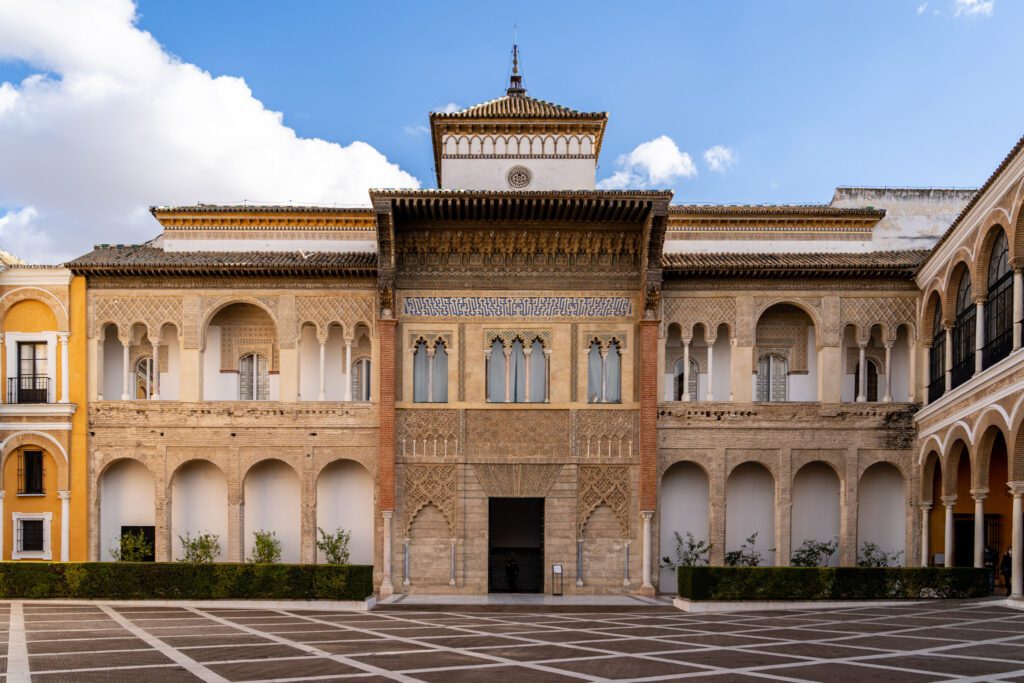
Our favorite attraction in Sevilla, the Royal Alcázar was originally built as a fort or castle (a military installation of some kind), and was repurposed as a royal palace following the Reconquista.
That history is important, because many elements of the structure today go back to that period – notably the walls enclosing the grounds so that you can’t see anything from the outside and the lush gardens that exist on the other side, unbeknownst to onlookers walking the streets along the walls.
The conversion to a palace included a remodel of the Gothic palace that was built here by the original Spanish occupants to bring the Mudéjar style to the palace because it was en vogue at the time.
We assumed that, similar to the Alhambra, the design was a relic of the history of the Islamic Caliphate’s period of rule, but that’s not true (most of that structure no longer exists).
If you’re going to do one tour in Sevilla, we’d make it Jose’s Royal Alcázar tour, which we did and loved on our first day in Sevilla. It set us up for a deeper understanding of the city and its history and culture over the course of the rest of the trip.
If a tour isn’t in the cards (or budget), you’ll need to purchase tickets ahead of time here.
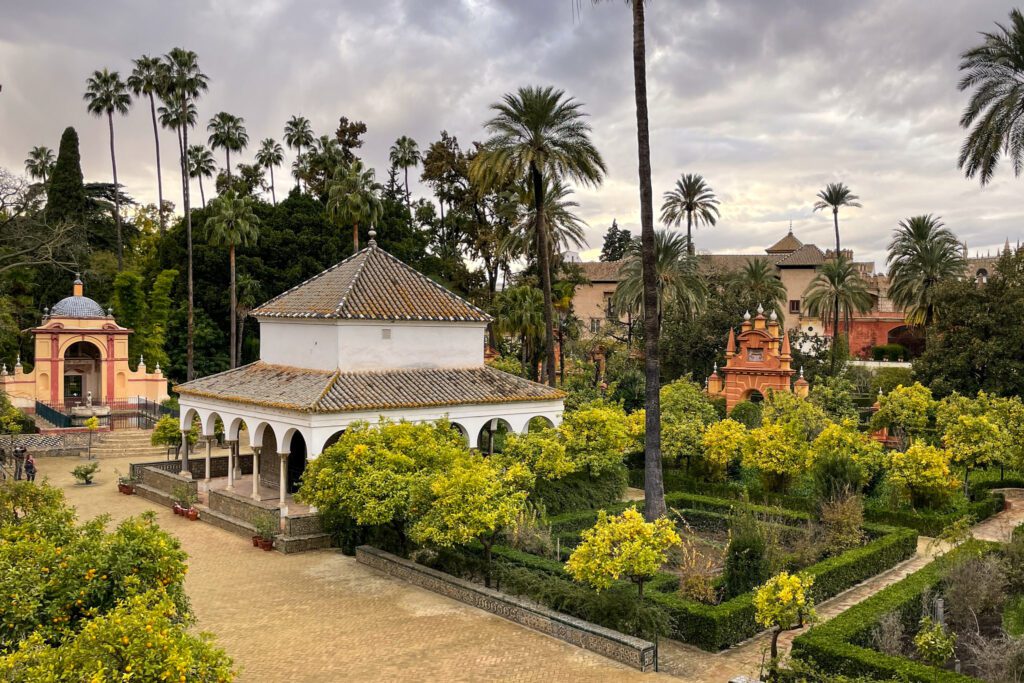
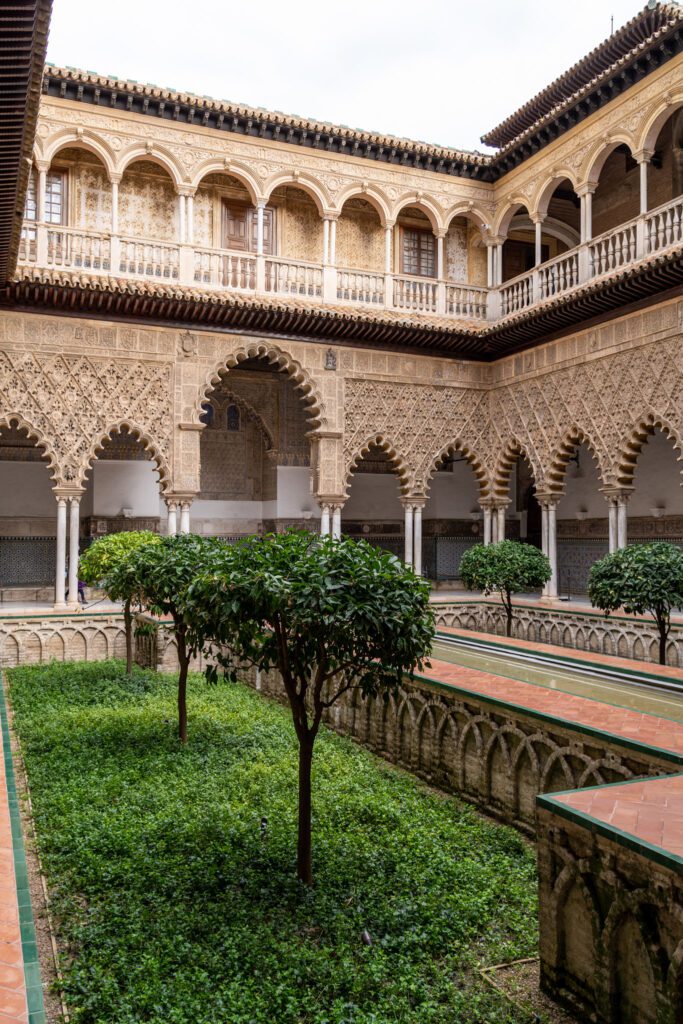
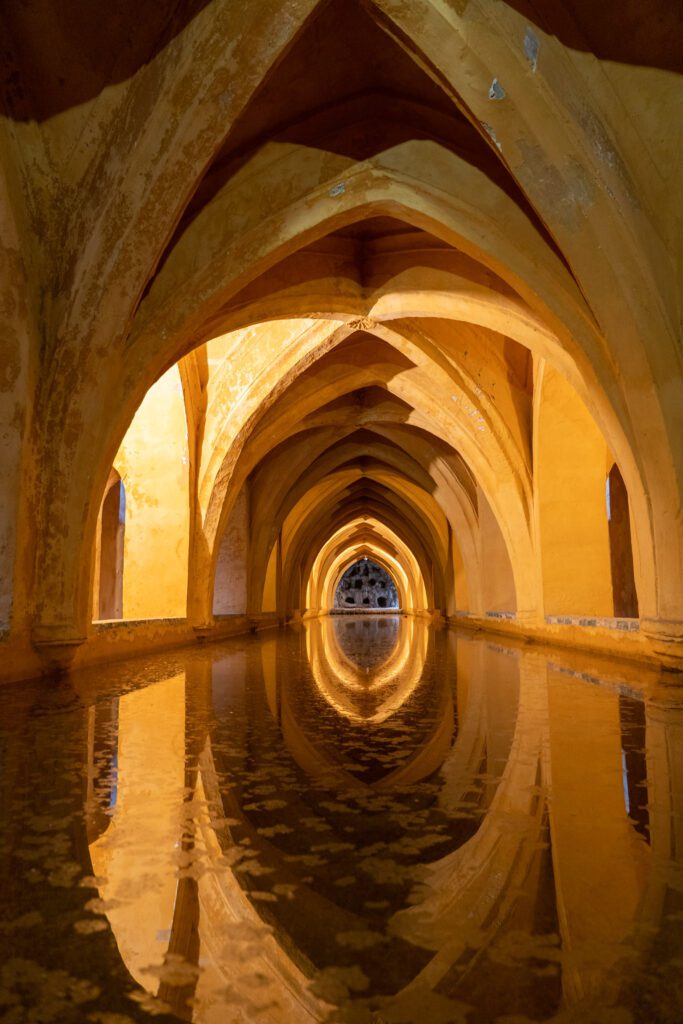
The Catedral de Sevilla
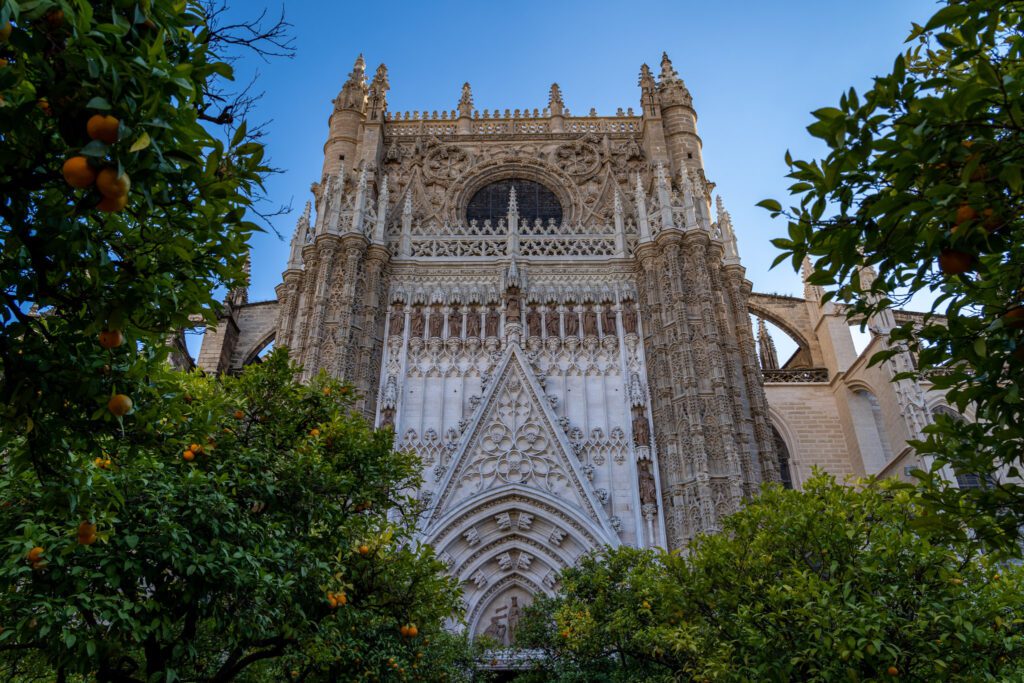
Sevilla’s cathedral used to be – and this might shock you – a mosque! You can tell by the extra tall bell tower (“La Giralda”), which was once used to issue the call to prayer before the building’s ownership changed hands.
It’s worth climbing to the top of the Giralda (there are ramps, not stairs, that bring you to the top) for excellent views out over Sevilla.
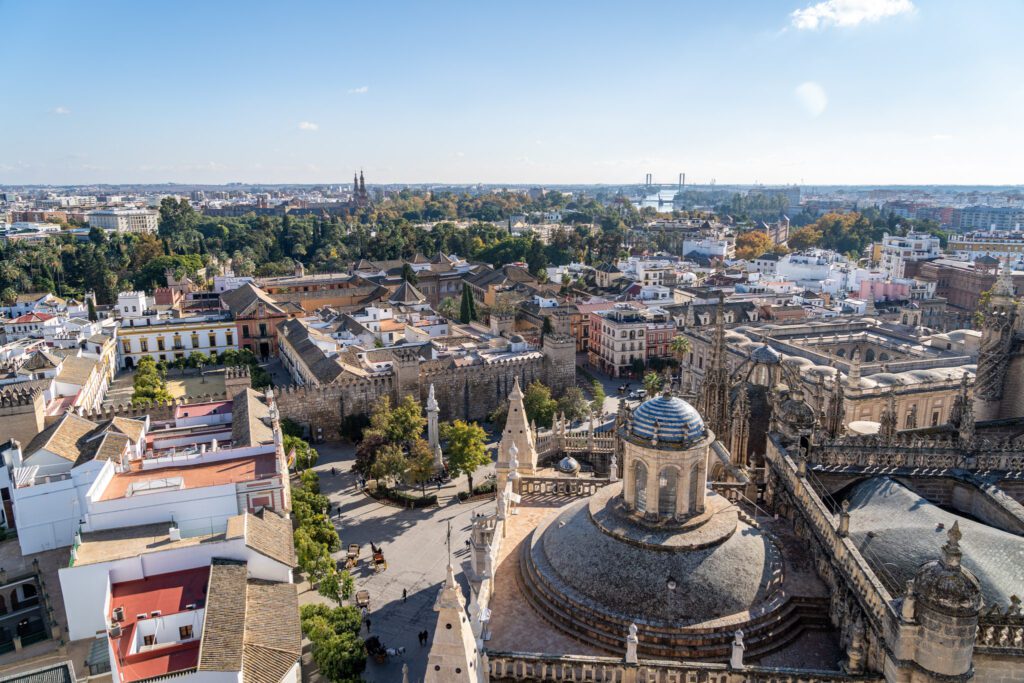
The other notable thing about this cathedral is the fact that Christopher Columbus is buried here. Or, more accurately, at least some portion of his body is buried here, but it’s unclear how much (he was originally buried in the Caribbean, and they may have kept a souvenir).
Putting aside the whole “is Christopher Columbus a hero that we should be looking up to” conversation, the cathedral itself is very impressive, and worth visiting.
You’ll want to buy tickets here, and make sure to decide whether the tower climb is something you want before you buy tickets.
Plaza de España
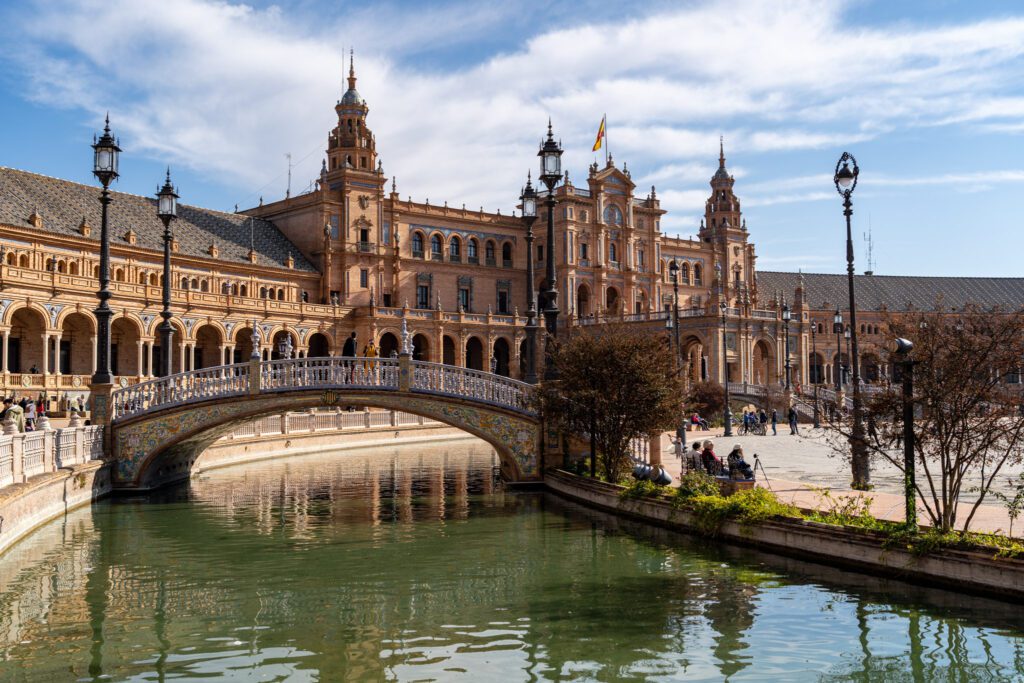
Star Wars nerds might recognize this beautiful plaza from scenes on Naboo with Anakin and Padme in Attack of the Clones (just before the “I hate sand” exchange), but its purpose in real life was to show off for the Ibero-American Exposition in 1929.
I don’t know what you know about 1929, but it didn’t turn out to be a GREAT time to host a big economic forum (kind of like how February 2020 wasn’t a GREAT time to bet it all on a travel website – OOPS!).
However, the fact remains that this might be the most beautiful plaza in all of Spain, with its water features, bridges, and ornate tilework.
Definitely come in the early morning and you’ll have this place to yourself (especially on a Sunday).
More Tapas!
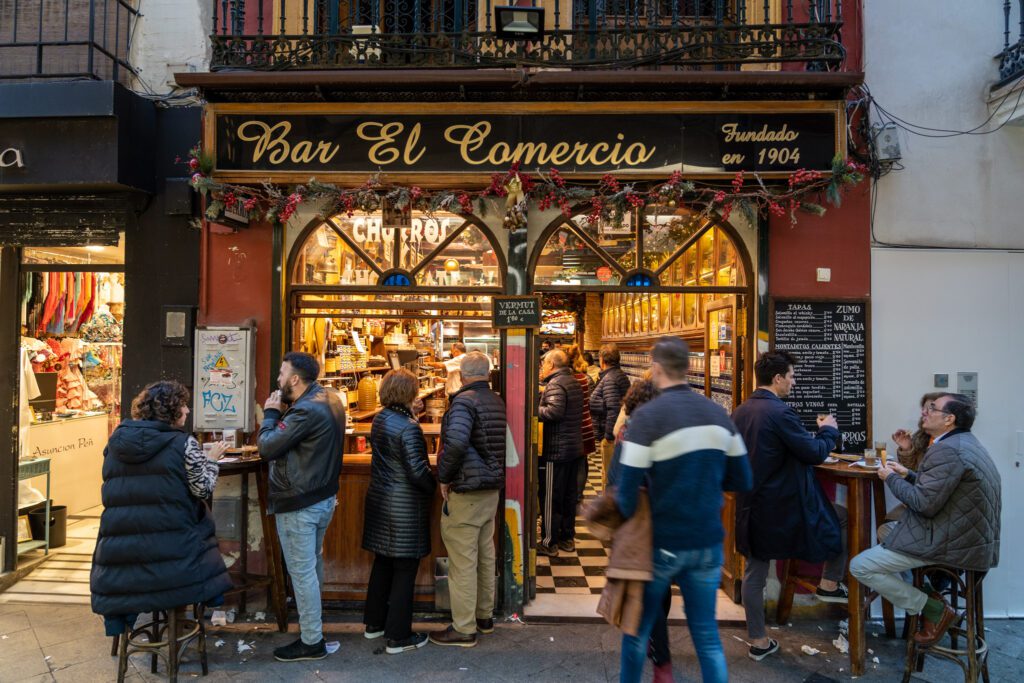
As we mentioned above, Sevilla sort of takes the whole Spain thing – eating late, tapas, etc etc – and turns the dial to 11. And by that, we mean that dinner doesn’t start until literally 11pm (we’re joking, but it’s not far off).
Tapas are something you should absolutely try here too, and it’s going to look a little different than it did in Madrid, with different ingredients and drinks showing up as a result of the change in region.
To get the most out of your limited time, we’d absolutely dedicate an evening to a tapas tour – either guided (we’d recommend this one because it’s a locally run company, though Matt having Celiac Disease means food tours aren’t always the best option for us), or self-guided based on recommendations from locals.
A good place to start would be Mercado de Triana, an indoor food market on the other side of the river with all sorts of fun stalls selling both ingredients like fruits, meats, and cheese, and ready-to-eat tapas.
Pro-tip: people in Sevilla DO NOT eat paella or drink sangria, but they DO eat churros and drink vino de naranja, vermouth, and sherry.
Take a Day Trip to Córdoba
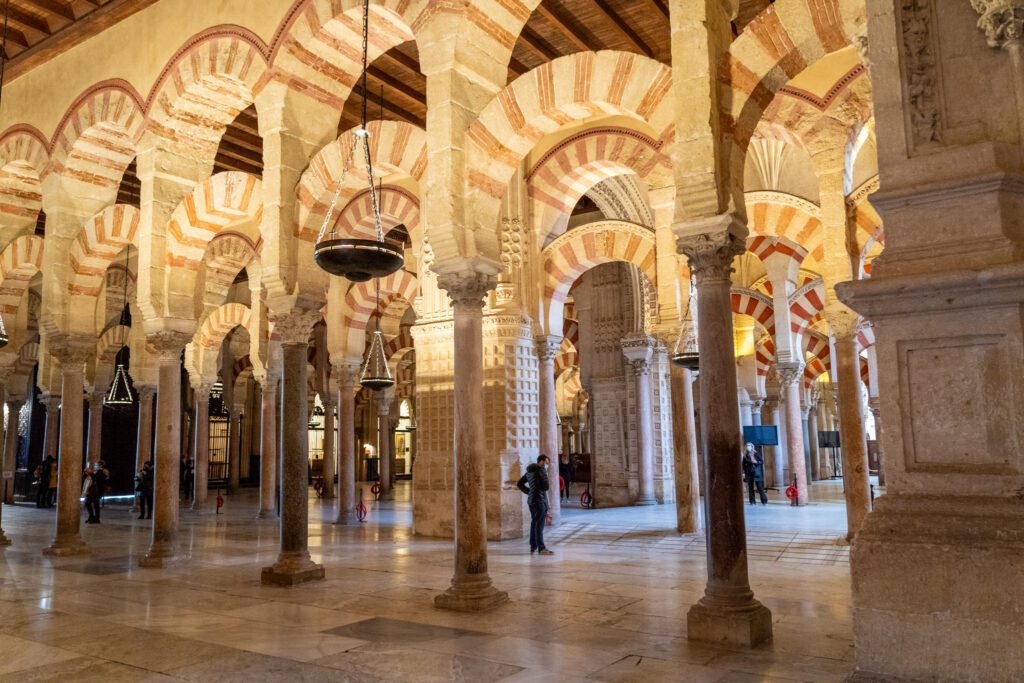
Each of the three cities on this itinerary have an excellent day trip option available (sometimes, many options), but we decided that the best of the bunch is going to Córdoba from Sevilla for the day.
It’s a quick train ride (45 minutes on the high speed train), it’s a beautiful city with tons of history (it was the center of power for the Islamic Caliphate for centuries), and the Mezquita is truly amazing.
We have an entire guide dedicated to planning a day trip to Córdoba, which you should read for all the details on how to get there, what to do, see, and eat, and more.
Where to Stay in Sevilla
Sevilla is a more compact city than, say, Barcelona, so choosing a place to stay is a little more straightforward here.
Generally speaking, you’re going to want to stay in the center of Sevilla, between the Cathedral at the southern end and the Setas de Sevilla at the northern end (and to the east of the river).
In terms of more specific areas, we really like the Jewish Quarter, Barrio de Santa Cruz, which is immediately adjacent to the Alcázar/Cathedral and is a charming set of narrow streets with some good places to eat and drink.
We didn’t stay there, though. We stayed at Casa de las Especias on our last stay in Sevilla, and it was a comfortable little apartment on a side street just off of two plazas, within 10-15 minutes of everything there is to see in Sevilla. We’d totally stay there again.
What to Add with More Time in Spain
If you have more time in Spain, here are the things we’d add (along with how much time you need to add them).
We also have an in-depth guide to planning both a 10 day trip to Spain and a 14 day Spain itinerary, if you happen to have more than a week to spend.
There are even more ideas on what to do with more time there.
Barcelona (+3-5 Days)
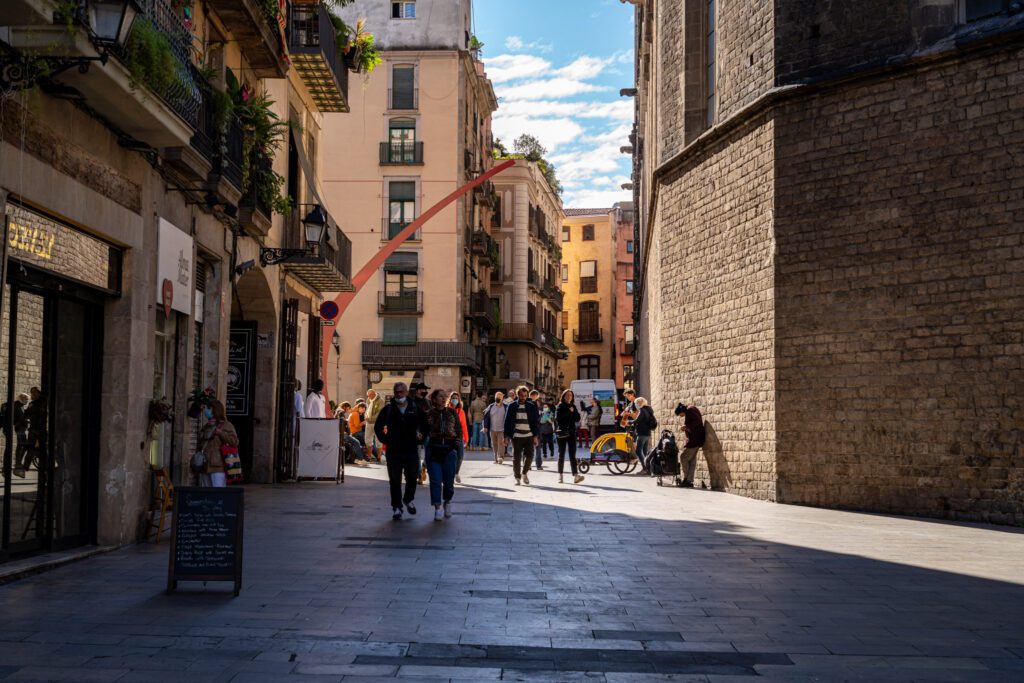
Like we mentioned at the top, there are going to be some of you who absolutely must visit Barcelona while you’re in Spain, and this section is for you.
With a week, you’re faced with a tough choice between Barcelona, which deserves three or four days AT A MINIMUM to fully take in (and doing it in two would be exhausting), or exploring Andalucía, which is our favorite part of Spain.
We can see why you’d lean in either direction, so we wanted to make sure we had a section that covers what exactly we’d do in Barcelona.
Barcelona itself is worth three days (at a minimum), and there are two excellent day trips to Montserrat and Girona that are also worth a day each if you have the time. Hence the range of three to five days above.
If you’d like to do Barcelona instead of Sevilla and Granada, our recommendation would be to take the Madrid piece of the itinerary above, add a day trip to Toledo (which is the next thing we’d add to the main itinerary with more time, and has a section below), and spend the rest of your trip in Barcelona (following our 4 day Barcelona itinerary).
We’d include a day trip to either Girona or Montserrat within those four days, which are our two favorite day trips from Barcelona.
Here’s what that looks like, written out:
- Day 1: Madrid
- Day 2: Madrid
- Day 3: Day trip to Toledo
- Day 4: Train to Barcelona
- Day 5: Barcelona
- Day 6: Day trip to Montserrat or Girona (more info in link to itinerary below)
- Day 7: Barcelona
In that scenario, you’d fly into Madrid and out of Barcelona – or vice versa depending on flight options – taking the high speed train between the two, which is what I did on my latest trip and it’s an easy journey (you can check timetables and prices on Omio).
Rather than give you all of the sections for what to do and where to stay, which would add to the length of this already long guide, what we’re going to do is link you to all of our Barcelona guides, which answer those questions for you.
- How to Plan an Amazing Barcelona Itinerary (4 Days)
- The Best Things to Do in Barcelona (for First Timers)
- Where to Stay in Barcelona: A Complete Guide for First Timers
- Things to Know Before You Visit Barcelona
- Where to Find the Best Specialty Coffee in Barcelona
- Gluten Free Barcelona: A Complete Guide (for Celiacs)
Take a Day Trip to Toledo from Madrid (+1 Day)
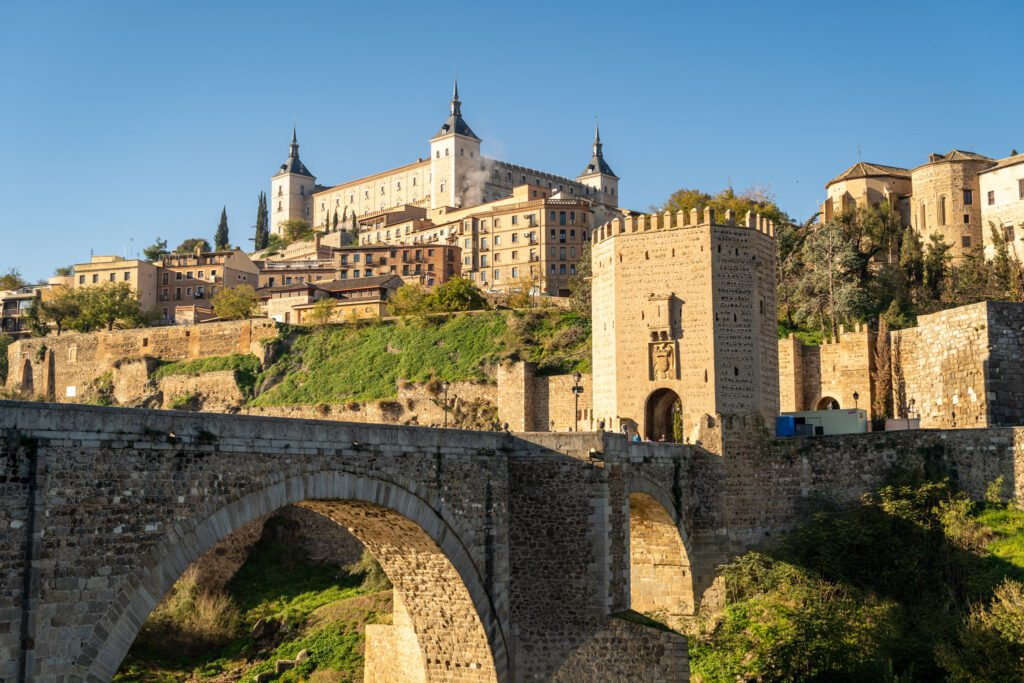
In terms of things to add to your itinerary if you only have an extra day or two, a day trip from Madrid to Toledo is at the top of the list for us.
Until Phillip II moved the capital to Madrid in the 16th Century, nearby Toledo was the seat of power in the region.
And, to be honest, Toledo as a capital makes a LOT more sense. It’s a strong position on a hill, it’s on a river (the Tagus), and it’s more well connected to the areas nearby as a result.
Toledo has a similar history to other places mentioned in this itinerary.
It was first an Iberian settlement captured by the Romans, then it was a Visigothic city until the Umayyad Caliphate showed up and captured it. Then, it was reconquered in the 11th Century.
The result was a city that had three large religious groups all living in one place: Muslims, Jews, and Christians.
And that, my friends, is why we think it’s worth visiting today – there are examples of religious sites from all three, including a gorgeous synagogue, a relatively modest mosque, and a massive cathedral (Catholics live by the “bigger is better” maxim) and monastery.
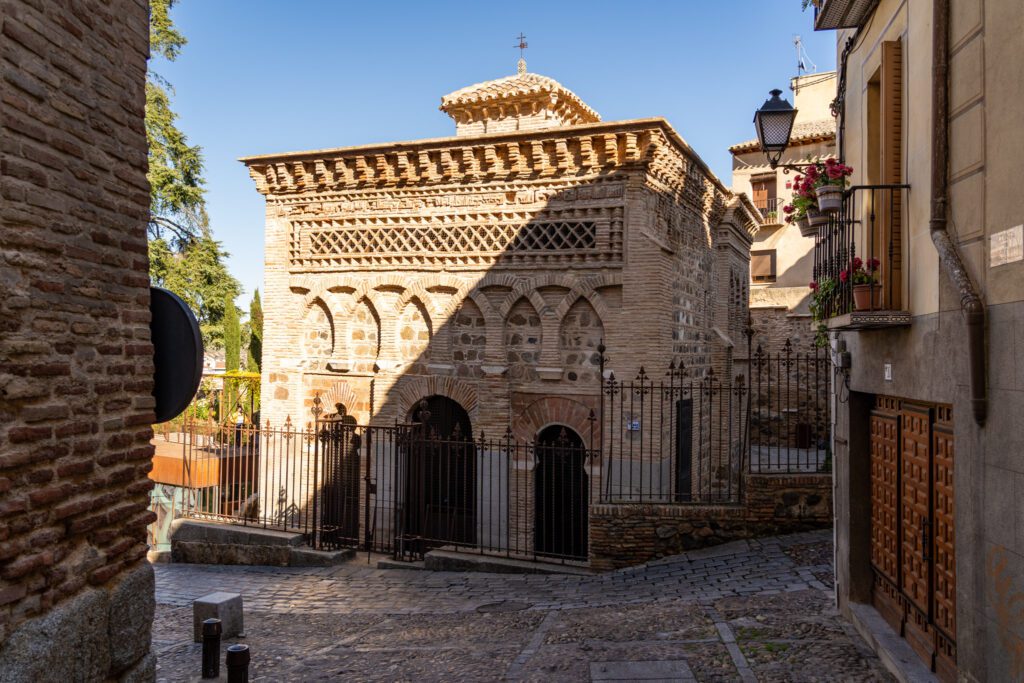
Add to that the proximity to Madrid (~45 minutes by high speed train), the fact that it’s a beautiful city perched on a hill overlooking a valley and the river, and the fact that it has a pretty excellent military museum, and you have all the reasons why we think it’s worth spending a day of your precious trip here.
Rather than list all the things to do and see in Toledo, we’ve put together a separate guide with all the information you need to plan an excellent day trip to Toledo (from Madrid) – currently in progress!
What to Do With Less Time in Spain
Honestly, if you have less than seven days in Spain, we recommend staying in one city. You’ll have plenty of time to explore the city itself, plus do some day trips out to the areas nearby.
Your best bets for a 3-5 day trip are the three main Spanish cities you’ve seen in this guide: Madrid, Sevilla, and Barcelona. Any of those cities would be an excellent choice for a shorter stint.
The other option, which only works if you have 5-6 days, is to skip Granada and do Madrid and Sevilla, following the itinerary above.
Planning a trip to Spain? We’d love to help!
Here are our other Spain travel guides to help you plan an incredible trip (even if you have to eat gluten free!).
If there’s no link below, it means we’re still working on it – long, in-depth guides take time! We’re working on it, though, we promise.
The first place to start, if you haven’t already found them, is with our detailed itineraries. We have one shorter version for 7 days in Spain, one version that covers 10 days in Spain (a good middle ground, we think), and one longer version for two weeks in Spain (with ideas for more and less time in both guides).
Our Barcelona Guides
- What to do in Barcelona (as a First Timer)
- How to Plan an Amazing 4 Day Barcelona Itinerary
- Where to Stay in Barcelona: A Complete Guide for First Timers
- 12 Things to Know Before You Visit Barcelona
- Gluten Free Barcelona: A Complete Guide to GF Restaurants + Bakeries
- Where to Find the Best Specialty Coffee in Barcelona
- How to Plan an Incredible Day Trip to Montserrat (from Barcelona)
Our Madrid Guides
- What to do in Madrid (as a First Timer)
- How to Plan an Amazing Madrid Itinerary (2 Days)
- Where to Stay in Madrid: A Complete Guide for First Timers
- 12 Things to Know Before You Visit Madrid
- Gluten Free Madrid: A Complete Guide to GF Restaurants + Bakeries
- Where to Find the Best Specialty Coffee in Madrid (for Coffee Nerds)
- How to Plan an Amazing Day Trip to Toledo (from Madrid)
The Rest of Spain
